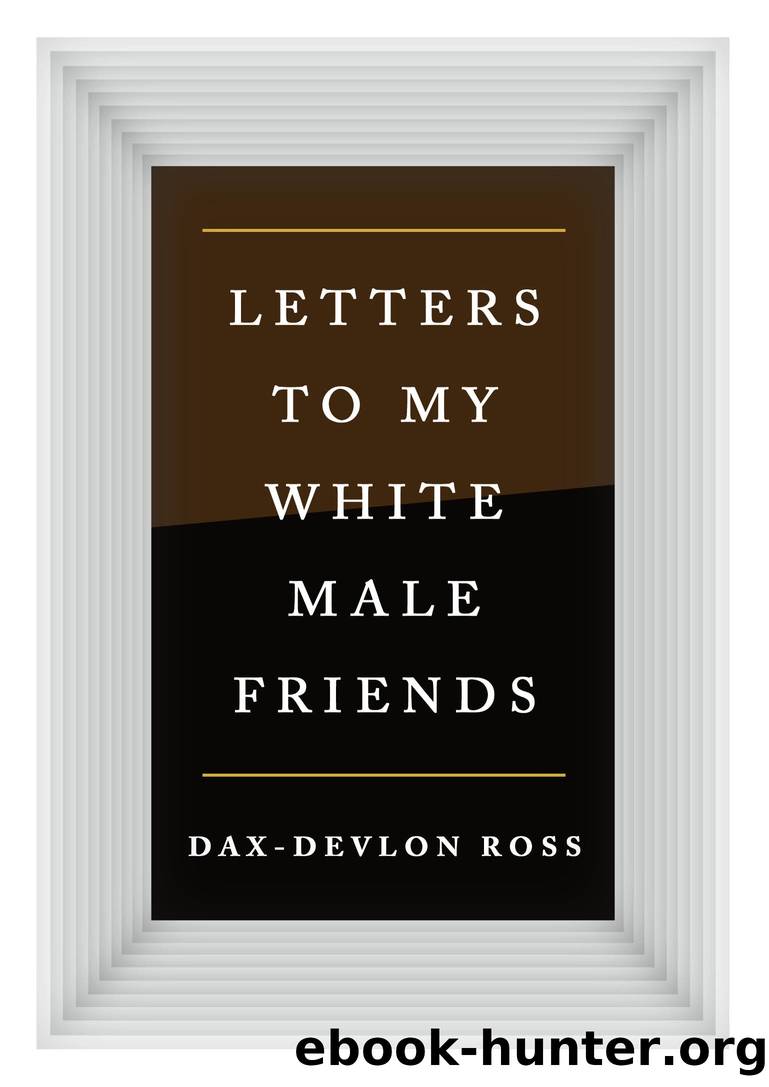Letters to My White Male Friends by Dax-Devlon Ross

Author:Dax-Devlon Ross
Language: eng
Format: epub
Publisher: St. Martin's Publishing Group
THE CULTURE OF EXPROPRIATION
Friend,
I was working just blocks from Zuccotti Park in the Financial District when Adbusters magazine issued the first call for Americaâs disaffected to Occupy Wall Street. The first ragtag protest happened right outside the windows of my office building. Over the days that followed, the daily protests puttered along almost comically. The Tahrir Square uprising notwithstanding, few expected those initial daily marches through the Financial District to spark a sustained movement, certainly not one that rippled across the country.
Then the State of Georgia refused to grant clemency to a Black death row inmate and convicted murderer named Troy Davis. The Davis case had made headlines and garnered support from President Jimmy Carter to Archbishop Desmond Tutu. Witnesses had recanted. Evidence had been called into question. And then there was the ever-present factor of race. Mark Allen MacPhail, the victim, was white. In Georgia, prosecutors and juries had been shown to condemn Blacks for killing whites at a significantly higher rate than the other way around. Once again, the upshot was that white life was worth more.
The stateâs ruling meant that Davis was going to die the next day. In response, his supporters put out a call for an emergency demonstration at Zuccotti Park (aka Liberty Plaza). After giving a radio interview about Davisâs death sentence, I walked over to the park to stand vigil at an emergency demonstration. As I stood among a multiracial, multigenerational crowd listening to an outpouring of pain, I distinctly felt the real occupation begin in earnest. Over the weeks and months that followed, few reports made the connection between Davis and Occupy. Having witnessed the early days and the shift that occurred, I can say that his death centered and grounded a gathering into a movement.
After that day, I made a point of walking through the camp daily, stopping to observe the General Assembly or talk with residents. I didnât consider myself an active participant in the movement then and wonât attempt to puff up my activist credentials now, but I was engaged all the same. Occupyâs indignation over wealth inequality was fueling a long-overdue national dialogue about economic justice. Its amorphous scope aligned young people seeking relief from crushing student debt to death-penalty abolitionists. Its flat structure bucked convention. Its elusiveness frustrated critics. And for me at least, the movementâs forced eviction from visible and valuable spaces across the country echoed the inner-city to urban face-lift Iâd witnessed over two decades in three different metropolises.
Iâd watched D.C. go condo crazy in the late 1990s and early 2000s, Brooklyn become a hipster haven post-9/11, and Jersey City refashion itself as the sixth borough in the prerecession aughts. In each case, the intrepid white bohemians arrived first. They settled in and set up a sprinkling of relatively innocuous coffee shops and divey bars, but otherwise blended into the existing tapestry. Yet, their mere presence alone signaled opportunity. The local real estate market took notice. What was once considered an unsafe or otherwise undesirable ghetto became an âup-and-comingâ enclave pulsing âculture.
Download
This site does not store any files on its server. We only index and link to content provided by other sites. Please contact the content providers to delete copyright contents if any and email us, we'll remove relevant links or contents immediately.
International Integration of the Brazilian Economy by Elias C. Grivoyannis(57322)
The Art of Coaching by Elena Aguilar(50014)
Flexible Working by Dale Gemma;(22950)
How to Stop Living Paycheck to Paycheck by Avery Breyer(19215)
The Acquirer's Multiple: How the Billionaire Contrarians of Deep Value Beat the Market by Tobias Carlisle(11675)
The Radium Girls by Kate Moore(10907)
Thinking, Fast and Slow by Kahneman Daniel(10585)
The Art of Thinking Clearly by Rolf Dobelli(8841)
Hit Refresh by Satya Nadella(8338)
The Compound Effect by Darren Hardy(7557)
Atomic Habits: Tiny Changes, Remarkable Results by James Clear(7212)
Turbulence by E. J. Noyes(7039)
Tools of Titans by Timothy Ferriss(6946)
How to Be a Bawse: A Guide to Conquering Life by Lilly Singh(6693)
Change Your Questions, Change Your Life by Marilee Adams(6641)
Nudge - Improving Decisions about Health, Wealth, and Happiness by Thaler Sunstein(6633)
Win Bigly by Scott Adams(6311)
The Black Swan by Nassim Nicholas Taleb(6190)
A Court of Wings and Ruin by Sarah J. Maas(6074)
